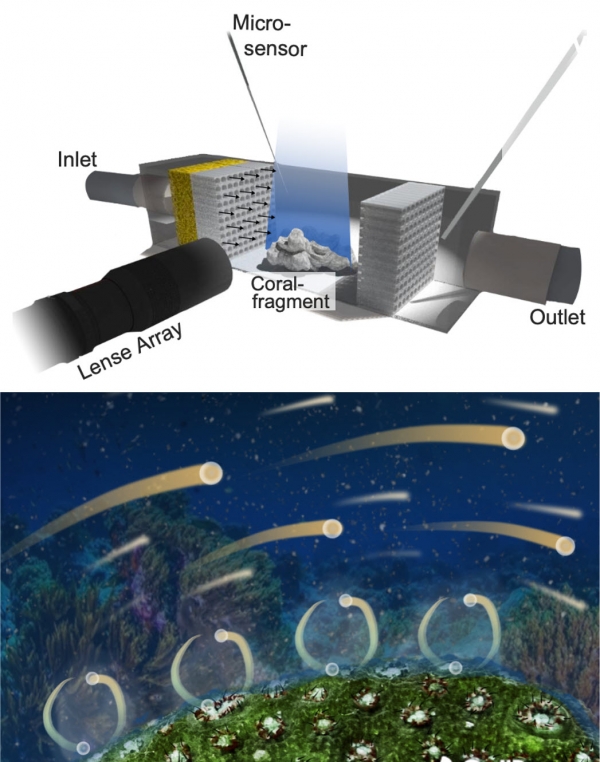An international research team headed by the Max Planck Institute for Marine Microbiology in Bremen, Aarhus University and the Science for Life Lab in Uppsala has developed tiny particles that measure the oxygen concentration in their surroundings. In this way, they can track fluid flow and oxygen content at the same time – exciting prospects for many fields of research, from biology to physics.
The surface of a coral is rugged. Its hard skeleton is populated by polyps that stretch their tentacles into the surrounding water to filter out food. But how exactly does the water flow over the coral surface, what eddies and flows develop, and what does this mean for the oxygen supply around the coral and its associated algae?
Until now, there was no answer to these questions. Now an international research team around Soeren Ahmerkamp from the Max Planck Institute for Marine Microbiology in Bremen, Klaus Koren from the Aarhus University in Denmark and Lars Behrendt from the Uppsala University and SciLifeLab in Sweden. has developed a method that allows studying the flow and oxygen concentrations simultaneously at very small scales. Now it is possible to see how the corals generate a flow with their cilia, thus increasing oxygen transport.
Continue reading at Max Planck Institute for Marine Microbiology
Image via Max Planck Institute for Marine Microbiology


